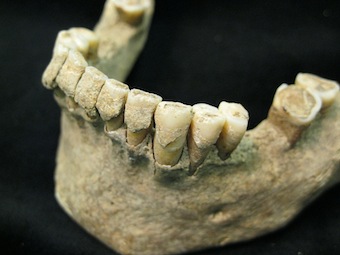Research: Bacteria Preserved on 1,000-Year-Old Plaque

According to a news release, a research team recently discovered 1,000-year-old dental calculus preserved on the teeth of skeletons. This discovery suggests that the human oral cavity is capable of retaining bacteria and food particles for extended periods, creating a niche for microbiomes to thrive. The research was published in Nature Genetics.
Led by the University of Zurich, the University of Copenhagen, and the University of York, the contributions of the 32 scientists involved found that, despite changes in our diet and hygiene over time, periodontal disease is still caused by the same bacteria today as it was in the past.
This information allowed the researchers to conclude that calculus slowly grows on the teeth. When it comes into contact with soil during burial, the preservation of the biomolecules rapidly stabilizes. This led the research team to investigate the DNA beyond the soil by applying shotgun DNA sequencing to the calculus, which allowed the team to recover copious amounts of information.
This groundbreaking research may be the first evidentiary finding that calculus preserves an astonishing amount of biomolecules, which is directly related to the origins of periodontal disease. The amount of information retrieved from a single tiny sample will enable researchers to investigate human health, the origins of disease, and the evolution of the human oral microbiome more accurately than ever before.
Since periodontal disease affects a significant amount of the world’s population, this discovery could be a massive breakthrough in investigating other systemic diseases such as cardiovascular disease, diabetes, stroke, pulmonary disease, and more.
SPEAR campus
Hands-On Learning in Spear Workshops
With enhanced safety and sterilization measures in place, the Spear Campus is now reopened for hands-on clinical CE workshops. As you consider a trip to Scottsdale, please visit our campus page for more details, including information on instructors, CE curricula and dates that will work for your schedule.

By: Denise Prichard
Date: February 25, 2014
Featured Digest articles
Insights and advice from Spear Faculty and industry experts


